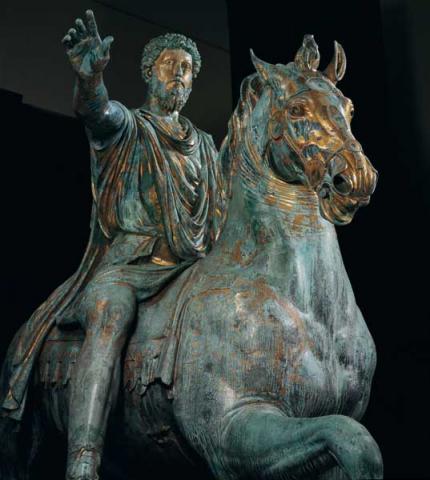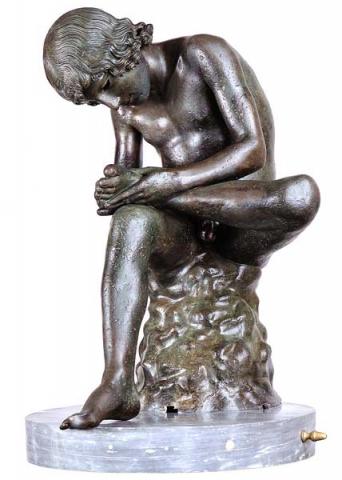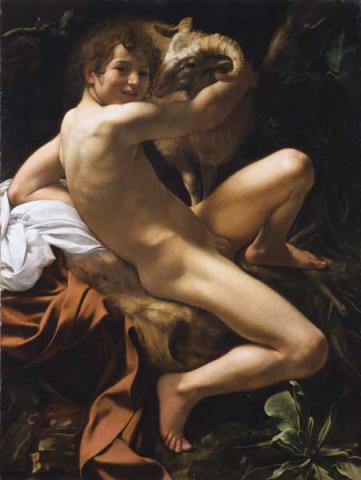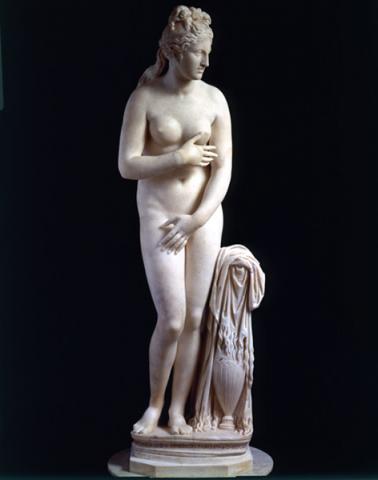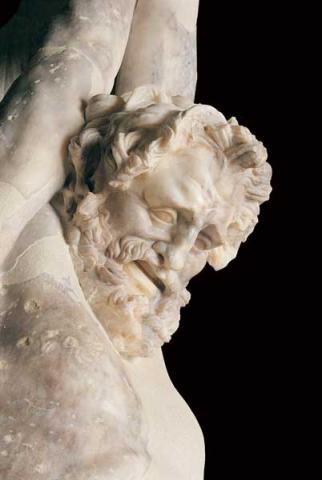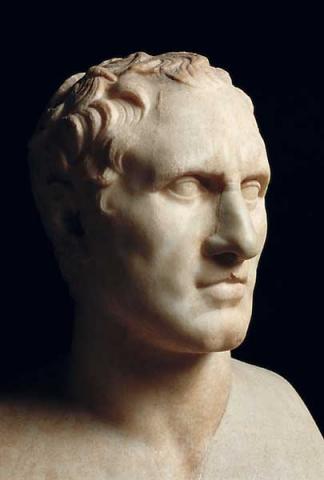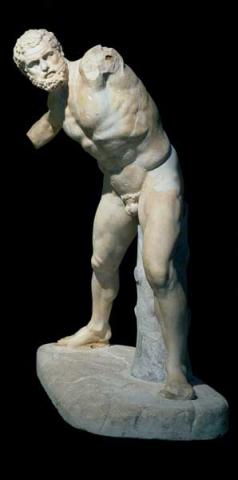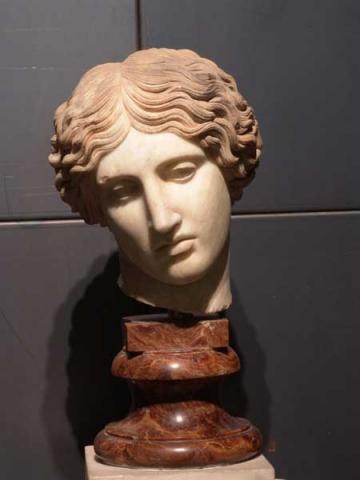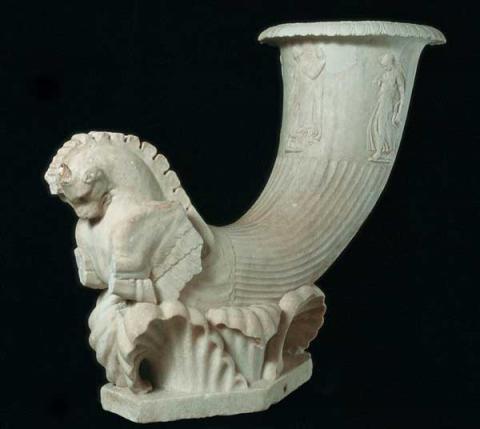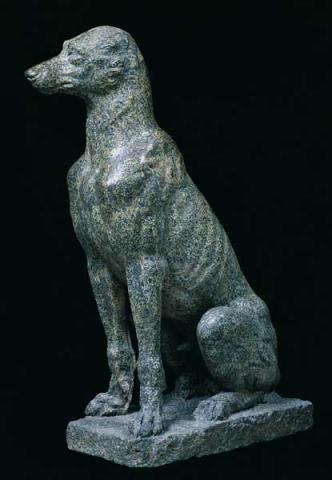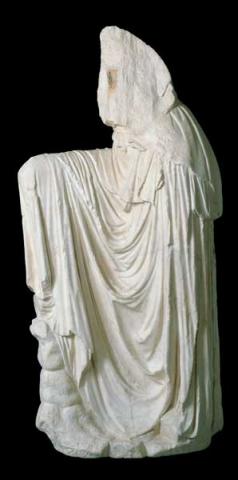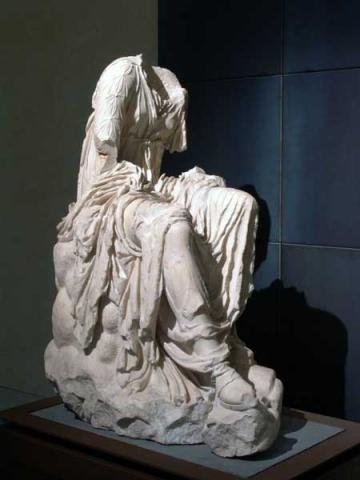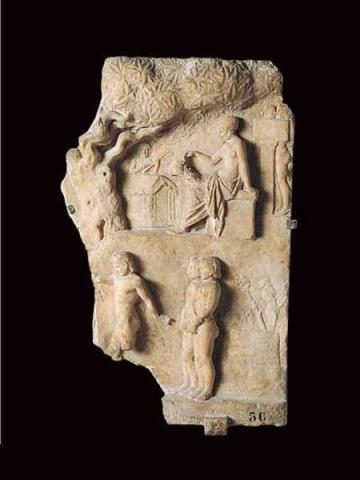Halls of the Horti of Maecenas
The Horti di Mecenate are the most ancient to be found at the residential gardens at the Esquilino; the friend and councillor of Emperor Augustus indeed transformed into a sumptuous residence an area that had until then been used as a necropolis, covering it with a large layer of earth.
Later having passed to Imperial domain, the gardens became an extension of the Domus Aurea at the time of Nero.
The only part that still exists today is the Auditorium, a summer triclinium decorated with frescoes with views of gardens.
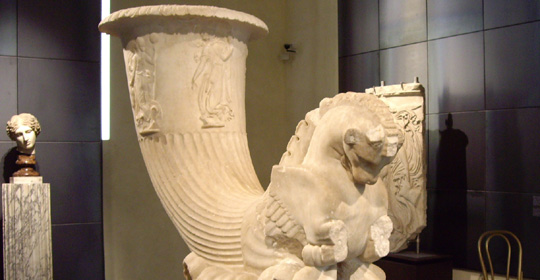
The sculpted decorations, found in pieces inside walls built in late antiquity, shows the cultural interests of the owner, with images of Muses and hermas with portraits of illustrious persons from literary circles, and his passion for collecting, with Greek funerary stones and very high quality copies of Greek originals.
The Esquiline housed a number of important residential gardens in ancient times. First of all the horti of Maecenas, friend and adviser of the emperor Augustus, who transformed a disreputable area into a prestigious residential area.
The Auditorium, a semi-underground summer triclinium decorated with frescoes of gardens in which small sculptures and fountains are inserted, as if to cancel the lack of openings to the outside, is the only archaeological evidence of the sumptuous residence of Maecenas, well known from the literary descriptions and particularly praised by Horace. The frescoes can be dated partly to the time of Maecenas and partly to the first decade of the 1st century AD, when the gardens passed to the imperial property.
The villa represented a sort of continuation of the immense territory occupied by the Domus Aurea. It is no coincidence that Nero witnessed the burning of Rome right from the top of Maecenas' Horti tower.
The rich decorations of the horti were found during excavations at the end of the last century. They had been reduced to pieces and used as building material inside late ancient period walls, according to a frequently proved custom, above all on the Esquiline hill.
Among the decorative works, the beautiful drinking horn-shaped fountain signed by the Greek artist Pontios stands out. its theme matches the refined relief with dancing Maenad derived from Greek models of the late 5th century BC. The highest artistic Amazon's head is a copy of an original work attributed to one of the greatest Greek artists of the 5th century BC. Whereas the statue of Marsyas strikes for its extraordinary Hellenistic realism, with its Pavonazzetto marble livid veins underlining the suffering of the character.
How splendid statue of the dog. Probably a work of Alexandrian production, made of a very rare mottled marble from Egypt which testifies to the owner's taste for collecting. The presence of a group of Muses perfectly in tune with the decorations of the horti and expression of the artistic inclinations of Maecenas is extremely significant. The work of art Auriga group from the early imperial age created according to stylistic features of the 5th century BC, is an example of a successful reconstruction with fragments found in the same area but at a considerable distance from each other.
The continuous reference to the Greek artistic civilization, indispensable baggage of every cultured Roman, is testified by the collection of original works, such as the splendid sepulchral stele with a female figure characterized by the complex and precious rendering of the drapery and by the presence of refined copies of Greek works such as the austere and imposing statue of Demeter or that of the fighting Hercules from an original statue of the end of the 4th century BC characterized by a marked dynamism.


























